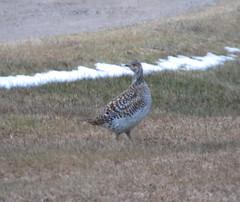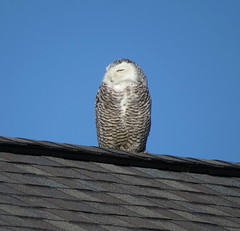I remember the first time I visited Voice Of America Park like it was just last month. It was probably around the time I made the decision to bird full time, as opposed to only when it’s nice outside, or I’m on a trip, or something like that. I had jumped in with both feet, and I was chasing anything and everything that was new. And that evening long ago is still imprinted in my memory.
I had just checked our local birding List-Serv and read that birders were see lots of Bobolinks at Voice Of America Park. By then Kathy was used to having me dash off chasing birds and tonight wasn’t any different than another time. This was a life bird for me and I didn’t want to miss out on the action so off I went.
30 minutes later I’m driving around the outside of the park trying to find the main gate since I’ve never been here before, that’s when I see several Bobolinks flying over the park fence and across the road. Now it’s getting exciting. Then I notice a dead bird in the middle of the road. I pull over to the side and walk back to see it’s a Bobolink. My heart sank. I carried the bird to the side and laid it in the brush, got into my car and eventually found the gate.
There’s an area in V.O.A. park that’s a protected bird area and that’s where I found them. They were everywhere. It was a beautiful sight. It was such a wonderful thing to see that I brought my best friend Phil back a few days later so he could tick off Bobolinks and the many Henslow Sparrow’s that were nesting there as well. It was such a nice patch of pristine grassland habitat for these birds.
As years pass more and more of the birds habitat was disappearing. The park board giving in to the youth athlete organizations and their need for more sport fields. And as we lost more grassland, we lost species. I haven’t heard a Henslow Sparrow in years, and the decline of the Bobolink population was apparent as well. For the past 2 years I’ve not seen any Bobolinks at V.O.A. until just recently.
Reports started to come in this Spring of Bobolinks showing up at V.O.A. again. I had to go over and see for myself. It took less than a minute when I spotted my first one. This is encouraging.
After spending several hours hiking around the area I came to the conclusion that they seemed to be hanging around this one area. And after some fancy calculating I figured there were 4 males and maybe 2 females from what I could see.
Now I’ll probably return in a few weeks to check on them and see if they’re still around or maybe I see more. Anyway you look at it, I was very pleased as I drove off towards home.



























